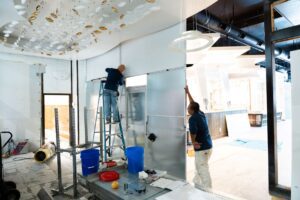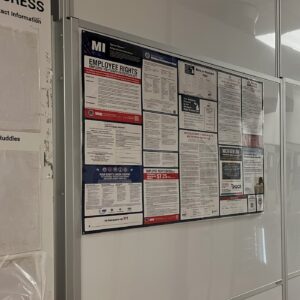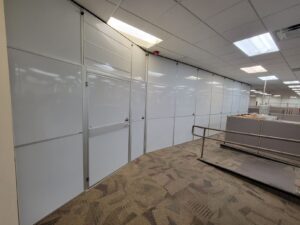The Role of Temporary Wall Systems in Meeting Healthcare Standards
The Role of Temporary Walls in Meeting Healthcare Accreditation Standards
The Joint Commission is a nonprofit evaluating and affirming healthcare organizations for over 70 years. The standards set by The Joint Commission ensure a more consistent level of care and help staff members grow their skills. Both of these lead to better health outcomes.
If your healthcare organization is considering or in the process of procuring accreditation and is also under construction or renovation, keep reading. Temporary Wall Systems (TWS) supports your commitment to high-quality care. Learn more about the role of temporary walls in meeting healthcare accreditation standards.
What are the benefits of Joint Commission accreditation?
Joint Commission accreditation is a voluntary vetting process that assesses and certifies a healthcare organization’s safety and quality. There are many benefits to pursuing accreditation, including:
- Enhanced reputation and credibility
- Demonstrates compliance with OSHA and CMS standards, among others
- Fosters a culture of pride and growth among staff
- Improves risk management and safety standards
- Delivers a better patient experience and more positive outcomes
- Increases eligibility for reimbursement
The accreditation process at a glance
Here’s a simplified overview of how The Joint Commission accredits a healthcare organization.
1. Preparation and self-assessment
Review all of The Joint Commission’s standards. Next, assign a team to compare those standards against current conditions. The goal is to identify gaps and other areas of non-compliance.
The team can create a plan of action to correct these areas before applying. Many facilities allow a year or more for this step to ensure thorough training and implementation of new policies.
2. Completing and submitting the application
Gather the appropriate information and documentation and complete the application. There is a fee associated with applying.
3. Site survey from The Commission
The Joint Commission typically schedules the on-site survey of your facility within a few months of application submission. You’ll usually have 30 days’ notice of their visit.
The survey team will consist of healthcare professionals who will observe and review procedures and standards and interview staff members.
4. Coming to a decision
The Joint Commission will share its findings. The applying organization can follow up with proof they’ve taken action to correct any noted deficiencies or errors from the survey.
After review, The Joint Commission will issue its decision.
5. Following up and maintaining accreditation
If approved, The Joint Commission will continue to survey its accredited facilities. Laboratories will receive an unannounced site visit every two years while other facilities can expect a visit every three.
How temporary walls help meet healthcare accreditation standards
Obtaining and sustaining accreditation during construction or renovation is the challenge. Here’s why temporary walls are the solution.
Helping healthcare providers maintain an excellent quality of care
The Joint Commission requires that accredited facilities follow the CDC’s transmission-based and basic infection control guidelines.
Temporary walls are solid, airtight barriers that meet the CDC’s infection control risk assessment (ICRA) guidelines.
Strengthening patient safety efforts
The National Patient Safety Goals (NPSG) focus on controlling infection, preventing medication errors, and avoiding surgical mistakes. However, preventing falls and increasing fire safety are also critical factors in meeting safety standards.
Temporary walls completely remove access to work zone trip hazards and are Class A fire-rated. They’re assembled in custom dimensions for the most effective coverage. These modular systems restrict access, support patient privacy, and reduce noise.
Supporting smooth organizational function
Every site survey focuses on staff competency and overall efficiency. Construction disruptions can alter pathways, unexpectedly change routines, and generally cause confusion.
Temporary walls clear the way for daily operations. Create break rooms, waiting rooms, meeting rooms, hallways, and storage areas with doors and keypad locks. Staff can stay focused and on top of their game during renovation.
Get fast, flexible, accreditation-friendly containment
Trusting a dedicated containment solution provider also means you get professional installation within a reasonable timeframe. Facilities can have fewer worries about lapses in the quality of care – especially when the next on-site survey is nearing.
Temporary Wall Systems helps you address compliance and accreditation concerns during construction. Contact us today for healthcare-centered containment solutions that are always up to standard.


